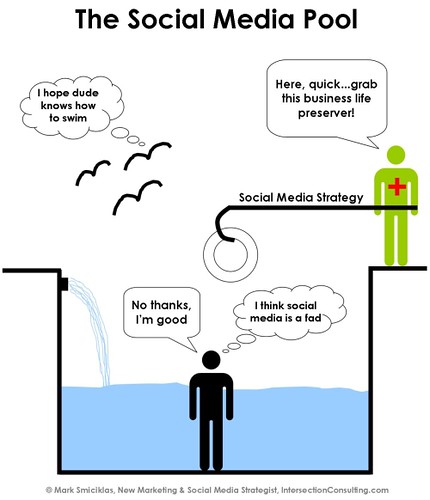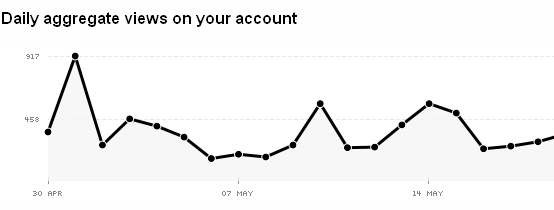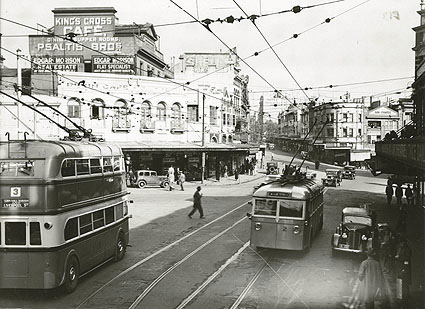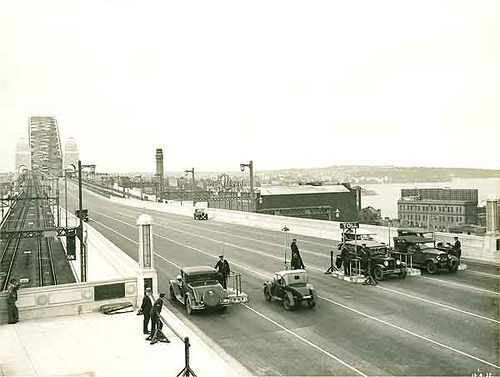It’s an eclectic bunch of links this month. A Gallipoli camera, Gandhi, the Sudan and the digital dark ages all get a mention. Read on to explore!
Tag Archives: social media
Infographic: Should I post this Update?
This is a question we ask ourselves all the time on this blog and the other social media channels we use. Regardless of whether it’s a professional or a personal channel there always comes a time when you wonder about material that might just cross the line. So what is the answer? And where is the line? Common sense never goes astray, however, there are a lot of grey areas out there. Here’s a handy infographic to help public/civil servants make that call.
[scribd id=89198840 key=key-7ph2fcppey40jzpzab1 mode=list]
To find out more about what led to the development of this infographic check out the companion post on the blog helpful technology – Digital engagement for people with more sense than money.
Got 60 seconds to spare? Check out our social media strategy
Brainstorming has become second nature for us in recent weeks. Starting with our Top 5 Reasons Why Archives Are Awesome we found we were on a roll and continued to ‘storm’, much to the chagrin of other staff.

A social media strategy for the blog is something we’ve been thinking about a lot:
- what we do
- how we do it, and
- what our goals are.
Our blog is part of several Web 2.0 initiatives at State Records NSW and this strategy may become the basis for the others. It is very basic, only three points and only 60 seconds long.
Our three-point strategy is The Three Cs:
- Create
- Connect
- Collaborate.
If anything, it gave us a chance to see what PowerPoint can do!
Watch the embedded video below or view it on Flickr
We’d love to hear your feedback in the comments below. What do you think? Is there something missing? Is there anything you would change?
Handy Tips for Social Media Security
Via @José Francisco Simó on Pinterest.
When you’re using social media every day it’s easy to become blasé about the risks posed by interacting online. This includes both personal risk and the risk to your brand or organisation. This graphic takes you through the types of social media attacks that have occurred over the last 5 years and outlines some basic preventative measures.
Update: Your name in lights – see the stars!
We asked if you had photos (or other information) to contribute that would complement the current content and as a result get your name in lights. It turns out light bulbs have been very effective for this particular mission. We have been delighted with the response and impressed with your efforts!
Your photo –> Your Name in Lights! Well, in bold lettering anyways…
The Kieran Gallery is not as complete as we’d like it to be and we thought you might be able to help. We know how much you love to date photos from our collection. It got us thinking that perhaps you also take photographs yourselves?
Social media strategies for archives – what we learned
Last Friday, Fiona and I attended the workshop “Developing a social media strategy for archives” at the Thinkspace media lab in the Powerhouse Museum. Hosted by Joy Suliman of the Powerhouse Museum, in conjunction with the Collections Australia Network, we came away inspired and full of possibility.
…and the Friday poll results are in
Our first Friday poll asked the question:
What is your social media platform of choice?
Our first year on Flickr
![]() Flickr has been our first foray into the fascinating world of Web 2.0. We set up a pro account in June 2008, with the aim of attracting a wider audience to State Records NSW by showcasing archival images and records in our collection. It was our introduction and, in part, a trial run of social media participation. In Flickr, we have discovered it to be an ideal and successful experience.
Flickr has been our first foray into the fascinating world of Web 2.0. We set up a pro account in June 2008, with the aim of attracting a wider audience to State Records NSW by showcasing archival images and records in our collection. It was our introduction and, in part, a trial run of social media participation. In Flickr, we have discovered it to be an ideal and successful experience.
Below is an account of our experiences using Flickr. As an aside, whilst joining Flickr had been on the ‘to-do list’ for some time, I’d have to say we were ultimately inspired to set up the account by the folks at the University of Newcastle Archives who showed us their Flickr success during a visit last year.
Our digitisation program
Our Flickr photostream primarily consists of photographs in our collection that have been scanned through our small, but effective, digitisation program which began in 2002. The images, dating back to the late 19th Century, are available to search and browse in our online image database Photo Investigator. The database was designed in-house and photographic series (or parts of) are progressively added. A unique in-built feature links the photographic series to Archives Investigator (our online catalogue) allowing you to navigate to more detailed record series information.
While Photo Investigator is a popular feature on our website, it cannot compete with the numbers of visitors our Flickr photostream receives. By default, the Flickr audience is infinitely larger than the State Records’ website and as a Flickr member we have been able to showcase a selection of images and help our records become more accessible, not only to the people of New South Wales but around the world.
Our photostream
Each image we upload to Flickr includes basic metadata such as title, date and a Digital ID reference which links back to the image in Photo Investigator. From there, visitors can access an “Order a high resolution digital copy” option.
On Flickr, we also include a general blurb about how our images can be used. This has expanded over time as people asked if we allow images to be used in blogs and on websites (we do). 
A year into this trial run, we have uploaded just over 700 images and the photostream has received over 25,500 views. Our goal is to upload at least ten images a week. Our contact list continues to grow and our 148 contacts include other archival institutions, libraries, museums and general Flickr users with a love of history and old photos.
Stats
Statistics – we love ’em here and the Flickr stats provide a way of gauging the types of photos viewed (such as: scenery and landscapes; city views and streetscapes; people at work and play) as well as the subjects being searched for. Initially, we aimed to upload images from a variety of record series so a broad spectrum would be available. We also uploaded images that we had featured elsewhere on our website, as well as favourite picks among staff. Now, with a large photostream, the Flickr stats can assist in selecting which images to upload as we can see the popular types viewed and ‘faved’ and the keywords being used in searches. We also try to upload photos of contemporary interest. For instance, when the toll booths closed on the Sydney Harbour Bridge in back in January, we added a couple of images showing early toll collecting on the bridge. This proved to be quite popular.
Spikes in traffic to the photostream can usually be identified, but not always. Dramatic increases occur when the Flickr account has been mentioned by State Records staff presenting talks and tours. The steepest rises appear when editions of our eNewsletter, Now&Then, are published with a ‘Flickr Update’ story included. Rises in visits also occur when a batch of images has been uploaded. Other spikes? It’s hard to say.
Viewers of the photos are not just Flickr members. The stats show that many people find our photos through search engines such as Google; Google Images; Yahoo; Facebook and other similar organisations who have linked to our photostream.
Organising the images
Photos have been arranged into numerous sets which make up nine broad collections:
- Your faves (all the photos that have been marked “fave” by Flickr users)
- At work
- Buildings
- On the water
- Railways and tramways
- Recreation and leisure
- Rural NSW
- Sydney
- Miscellaneous
We are able to tag and describe images using more general terms than the controlled vocabulary of Photo Investigator. Our Flickr contacts can also tag our images which makes it easier to relocate them, while simultaneously helping other Flickr users find them.
Adding images to Flickr groups is another way to make our collection more visible and accessible.
Geotagging
Recently we started ‘geotagging’ some of our Flickr photos. This is basically assigning coordinates (location information) to an image so it can be plotted onto a map. We are concentrating on photos of railway stations at this stage and we hope to create a map of train stations around New South Wales.
Be interactive
Measuring the success of our Flickr experience is not just via stats. Inviting users to join us in identifying unknown scenes, people and places by tagging and commenting on our photostream makes for an engaging experience all round. As a bonus, we have had several photos ‘possibly’ dated as a result.
Some of our Flickr friends, such as Mosman Library, blog about our photos. Another friend writes interesting “now and then” posts on his blog using his own photos for “now” and photos from archival/library institutions on Flickr as the “then”.
Is this time-consuming?
On average, I spend 2-3 hours on Flickr each week. This includes selecting and uploading images, adding images to Flickr groups, replying to comments and Flickr mails, adding new contacts, viewing photostreams of other organisations and interpreting statistics. Aside from one eager contact who kept inviting us to join some rather suggestive Flickr groups, we haven’t received any spam comments.
To sum up
Joining Flickr has been an innovative way to showcase our archival collection, engage users and introduce the collection to a new audience. It’s an easy way to keep in contact and up-to-date with other archival collections from around the world and interact with the wider community. While digital copy orders have not increased significantly as a result, this would have been more a bonus, it wasn’t the reason for creating a Flickr account.
Our aim to make our archival collection more visible and accessible has been realised. I think we can safely say it’s no longer a trial run.
Future plans?
In the near future we will be adding scanned images of some of our paper-based archival documents as well as images of conservation treatments carried out on our collection. What next? Facebook? Twitter? Perhaps.
Do you have a favourite?
We’d love to know in the comments if you have a favourite archival-based photostream on Flickr. Do you maintain one and what has been your experience?
Posted by:
Anthea Brown, Project Archivist, Online Services
State Records NSW



